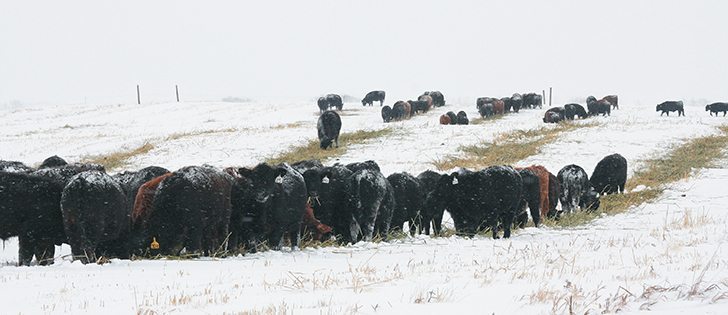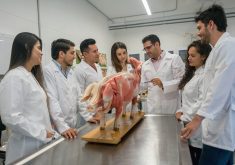Flexibility is key | Producers say feeding cattle in the field is effective but a Plan B is required when something goes wrong
AIRDRIE, Alta. — Producers must be flexible and have a back-up plan if they’re going to switch from feeding hay bales in a feed yard to other alternatives.
Scott Copley of Airdrie said producers must “assess, adapt and reassess” when adopting alternative feeding systems in the winter especially when the weather goes bad.
Copley was tired of starting a tractor to feed his cattle every day when he decided to add a straw and chaff buncher behind his combine five years ago to collect the straw that would normally be spread across his field.
Read Also

Crop quality looks good this year across Prairies
Crop quality looks real good this year, with the exception of durum.
He said bunching the chaff and hay in piles throughout the field adds $100 an acre to his barley crop through feed savings.
Unlike swaths, which are sometimes buried in the deep snow, the bunches of straw seem to be big enough to always poke above the snow and allow cows and calves to easily find them in the field.
The mixture of chaff and bits of grain mixed throughout the straw also encourage the cattle to dig deep into bunches to eat everything.
“It makes those cows go after those bunches,” Copley told a Canadian Forage and Grasslands Association tour.
When the bunches run out, Copley moves the herd to bales placed in rows in a pasture near the house. Electric fence stuck in the bales limits how much the cattle eat.
“It doesn’t matter what blows through, those bales will be sticking out of the snow for them.”
Nearby at Irricana, Doug Wray has used alternative grazing methods for 15 years with good success.
“The idea of feeding cattle in a corral has passed,” said Wray.
“Cattle are quite willing to go out and forage for their feed.”
Wray’s cows graze native pasture in the winter while the calves are fed swath grazing.
“One of the keys to this game is to be flexible and be able to adjust on the fly,” said Wray, who placed extra feed for his cows during a recent winter storm.
Haying isn’t a big part of his program, but he said a haystack is a good hedge against drought and nasty winter weather.















